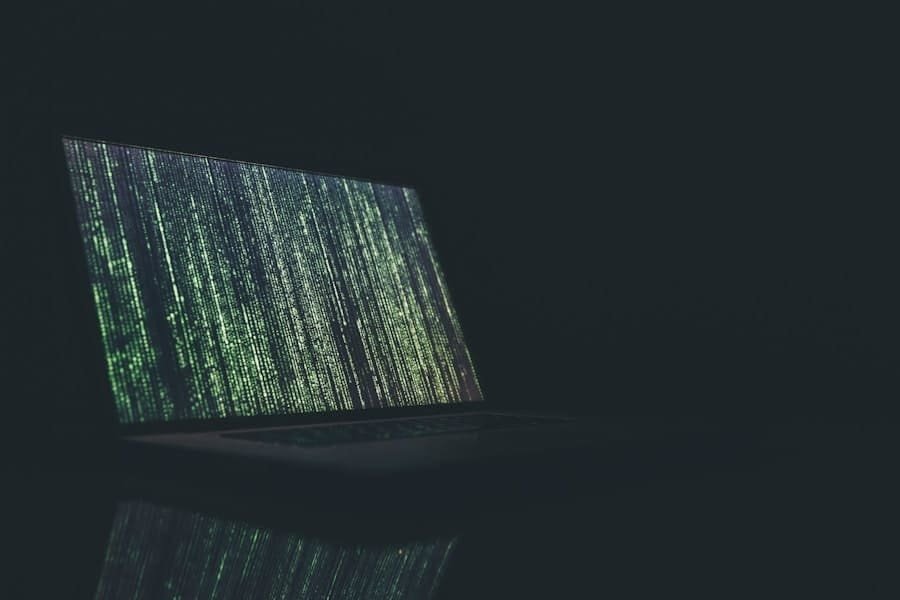5 Signs It’s Time to Visit a Phone Repair Center in Brisbane
December 19, 2024 | by search.wizards.info@gmail.com

A cracked screen is one of the most common issues that smartphone users face. Whether it’s due to a drop, impact, or pressure, a cracked screen can be a major inconvenience. Not only does it affect the aesthetics of the phone, but it can also hinder the functionality of the device. A cracked screen can lead to touch sensitivity issues, making it difficult to navigate the phone and use certain apps. Additionally, it can also pose a safety hazard as small glass shards can cause injury if not handled carefully.
One of the most common causes of a cracked screen is dropping the phone onto a hard surface. This impact can cause the glass to shatter, leaving behind a web of cracks that can make it difficult to see the screen clearly. In some cases, the cracks may be minor and only affect the outer layer of the screen, while in other cases, the cracks may penetrate deeper into the display, affecting the overall functionality of the phone. Regardless of the severity of the crack, it’s important to address the issue as soon as possible to prevent further damage and potential injury.
Another cause of a cracked screen is applying too much pressure to the phone. This can happen when the phone is placed in a tight pocket or purse, or when it’s accidentally sat on or stepped on. The pressure can cause the glass to crack, leading to a compromised screen that may need to be replaced. In some cases, a screen protector may help prevent cracks from forming, but in other cases, the impact may be too severe for a screen protector to provide adequate protection. Overall, a cracked screen is a common issue that many smartphone users face, and it’s important to take steps to prevent and address this issue to ensure the longevity and functionality of your device.
Battery Drainage
Battery drainage is another common issue that smartphone users encounter. Whether it’s due to excessive usage, background apps, or a faulty battery, battery drainage can be a major inconvenience that affects the overall usability of the device. When a phone’s battery drains quickly, it can lead to frequent charging, reduced usage time, and overall frustration for the user. Additionally, battery drainage can also affect the performance of the phone, causing lagging, freezing, and other issues that hinder the overall user experience.
One of the most common causes of battery drainage is excessive usage. When a phone is used for extended periods of time, especially for power-intensive tasks such as gaming or streaming, it can cause the battery to drain quickly. Additionally, background apps and processes can also contribute to battery drainage, as they continue to run even when not in use, consuming valuable battery life. In some cases, a faulty battery may also be to blame for battery drainage, as it may not hold a charge as effectively as it should.
To address battery drainage, there are several steps that smartphone users can take. One option is to reduce usage time and limit power-intensive tasks to conserve battery life. Additionally, closing background apps and processes can help reduce battery drainage and improve overall performance. In some cases, replacing the battery may be necessary to address the issue, especially if it’s old or faulty. Overall, battery drainage is a common issue that many smartphone users face, and it’s important to take steps to address this issue to ensure optimal battery life and performance.
Overheating
Overheating is a common issue that many smartphone users encounter, especially when using power-intensive apps or in hot environments. When a phone overheats, it can lead to reduced performance, battery drainage, and potential damage to the device. Additionally, overheating can also pose a safety hazard as it can cause burns or discomfort for the user. Overall, overheating is a common issue that can affect the overall usability and longevity of a smartphone.
One of the most common causes of overheating is excessive usage of power-intensive apps or tasks. When a phone is used for extended periods of time for tasks such as gaming or streaming, it can cause the internal components to generate excess heat, leading to overheating. Additionally, using the phone in hot environments or direct sunlight can also contribute to overheating, as the external temperature can affect the internal temperature of the device. In some cases, a faulty battery or internal component may also be to blame for overheating, as they may not regulate temperature effectively.
To address overheating, there are several steps that smartphone users can take. One option is to limit usage time for power-intensive tasks and take breaks to allow the phone to cool down. Additionally, using the phone in cooler environments and avoiding direct sunlight can help prevent overheating. In some cases, updating software or replacing faulty components may be necessary to address the issue. Overall, overheating is a common issue that many smartphone users face, and it’s important to take steps to prevent and address this issue to ensure optimal performance and safety.
Speaker or Microphone Malfunction
Speaker or microphone malfunction is another common issue that smartphone users encounter. Whether it’s due to physical damage, software issues, or faulty components, speaker or microphone malfunction can be a major inconvenience that affects the overall usability of the device. When a speaker or microphone malfunctions, it can lead to reduced call quality, audio distortion, and overall frustration for the user. Additionally, speaker or microphone malfunction can also affect other features of the phone such as voice commands and audio playback.
One of the most common causes of speaker or microphone malfunction is physical damage. Dropping the phone or exposing it to moisture can cause damage to the internal components, leading to speaker or microphone malfunction. Additionally, software issues such as outdated drivers or incompatible apps can also contribute to speaker or microphone malfunction. In some cases, faulty components may be to blame for speaker or microphone malfunction, as they may not function as effectively as they should.
To address speaker or microphone malfunction, there are several steps that smartphone users can take. One option is to check for physical damage and ensure that all components are intact and functioning properly. Additionally, updating software and drivers can help resolve software-related issues that may be causing speaker or microphone malfunction. In some cases, replacing faulty components may be necessary to address the issue. Overall, speaker or microphone malfunction is a common issue that many smartphone users face, and it’s important to take steps to prevent and address this issue to ensure optimal call quality and audio functionality.
Water Damage
Water damage is a common issue that many smartphone users encounter, especially when using their devices in wet environments or exposing them to moisture. When a phone suffers water damage, it can lead to reduced performance, hardware issues, and potential damage that may require costly repairs. Additionally, water damage can also pose a safety hazard as it can cause electrical malfunctions and potential harm to the user. Overall, water damage is a common issue that can affect the overall usability and longevity of a smartphone.
One of the most common causes of water damage is exposing the phone to moisture from rain, spills, or submersion in water. When water enters the internal components of the phone, it can cause corrosion and electrical malfunctions that affect performance and functionality. Additionally, using the phone in humid environments or exposing it to excessive moisture can also contribute to water damage. In some cases, using waterproof cases or protective covers may help prevent water damage, but in other cases, exposure to moisture may be too severe for these measures to provide adequate protection.
To address water damage, there are several steps that smartphone users can take. One option is to immediately power off the phone and remove any external accessories such as cases or covers. Additionally, drying the phone with a soft cloth and placing it in a bag of uncooked rice or silica gel packets can help absorb moisture and prevent further damage. In some cases, seeking professional repairs may be necessary to address water damage and restore functionality. Overall, water damage is a common issue that many smartphone users face, and it’s important to take steps to prevent and address this issue to ensure optimal performance and longevity of your device.
In conclusion, smartphones are an integral part of our daily lives but they are not immune from issues such as cracked screens, battery drainage, overheating, speaker or microphone malfunction and water damage. It’s important for smartphone users to take steps to prevent these issues from occurring and address them promptly if they do arise in order to ensure optimal performance and longevity of their devices. By being proactive and taking care of their smartphones properly, users can avoid unnecessary frustration and costly repairs in the long run.
RELATED POSTS
View all



 Choose repair by clicking (book now)
Choose repair by clicking (book now)